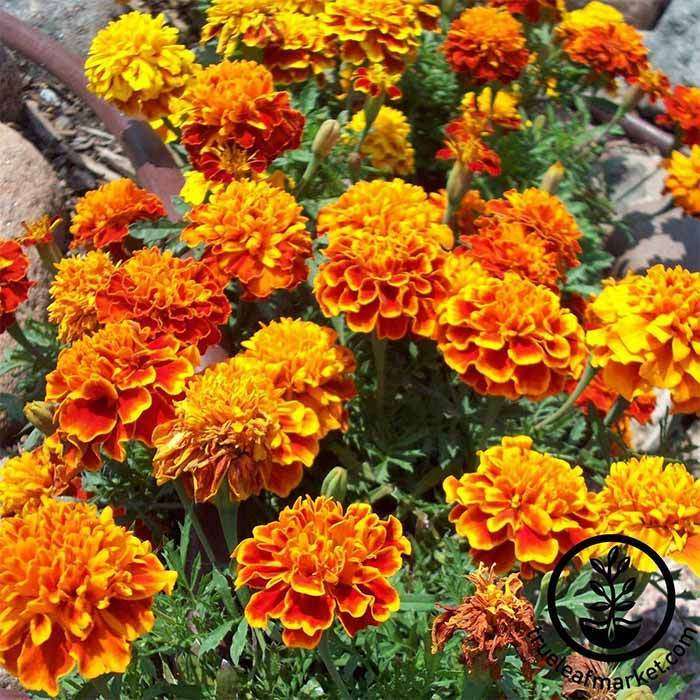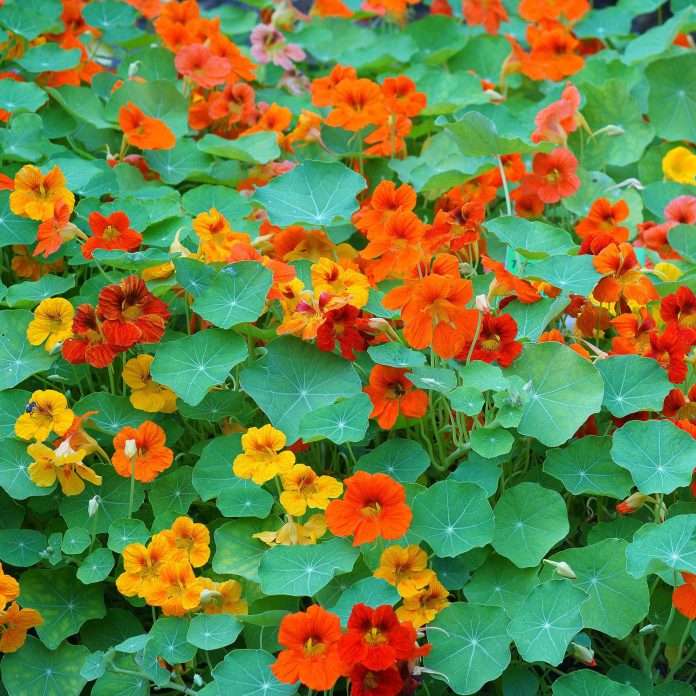April showers bring May flowers. What do May flowers bring? Pilgrims, of course! And healthier gardens. Companion gardening has long been a practice of many gardeners. Companion planting is when two or more plants are grown near each other for the benefit of one of those plants or for both of them. There are many reasons to plant certain crops together. Deterring pests by planting nasturtiums or weed suppression from sprawling crops like potatoes minimize open areas where weeds can take hold, help to lessen a gardener’s work. Attracting beneficial insects like pollinators or pest-eating wasps and ladybugs, helps lower the need for chemical insecticides. Additional benefits such as natural supports like corn or sunflowers support sprawling crops like cucumber, beans and peas, as well as provide shade for smaller plants like lettuces.
Initially, much of companion planting was based on folklore, but lately more and more science has validated some companion planting. While some gardeners believe that marigolds will control nematodes and other insects if planted among vegetables, not all varieties have this capability. Only the French marigold (Tagetes patula) varieties such as Nemagold, Petit Blanc, Vinca and Queen Sophia can reduce nematodes by their insecticidal root secretions and only in their immediate root zones. If you chose to use French marigolds, they should be planted throughout the garden area. The French marigold is an annual bedding plant with fiery bright blooms ranging in color from yellow-orange to brown. Frequent pollinators of this flower include beetles such as ladybugs and tachinid or lacewing flies. The leaves of the plant are known for producing pungent oils which are effective as a source of anti-fungal and pesticidal compounds. The plant is usually avoided by scent-sensitive grazers like rabbits and other pests. Plant a few rows of French marigolds around plant beds to help your garden thrive.

Another favorite companion flower of gardeners is English lavender (lavandula angustifolia). English lavender not only has a lovely calming fragrance, but is especially hardy in our Oklahoma growing zones. It favors mild, dry climates and can withstand brief drought periods. The beautiful blue-to-violet blooms last through the summer. The shoots and leaves are pest-resistant and the scent can repel hungry grazers, such as rabbits and deer. As a companion
plant, it also attracts pollinators which are beneficial to promoting fruit and vegetable growth. Zinnias also are great companion flowers for vegetable gardens as their bright colors attract a variety of pollinators.
Perhaps the best companion flower for vegetable gardens is the Nasturtium. This annual flower has very distinctive, large, dish-shaped deep green leaves and lovely yellow to orange blossoms throughout the summer. It has many wonderful companion attributes and, as an added bonus, the roots, leaves and flowers are edible. The Nasturtium also has antibacterial properties. As a companion flower, Nasturtium entices aphids away from many vegetable plants, especially tomatoes.

Flowers are not the only companion planting to vegetables. Vegetables also support other vegetables. The “three sisters” have been traditionally grown by indigenous peoples for millennia. Corn is the tall sister, holding and protecting her smaller sisters, Bean and Squash. Corn provides the stalk for pole beans to climb. Sister Bean fulfills a need as she regulates the amount of nitrogen in the soil, a necessary element for plants to grow healthy. Squash, particularly winter squash such as butternut, acorn, spaghetti or pumpkin, provide ground cover to keep water from evaporating allowing Sister Corn to grow tall and Sister Bean to grow thick and lush. Plus, this little sister makes it difficult for critters such as raccoons, deer and rabbits to get to the corn and beans.
While there are many companion planting guides available throughout the internet, three of the best can be found at the Farmer’s Almanac, Burpee Seed Company and our own OSU Extension Office. Be sure to check out the OSU Extension gardening fact sheet HLA-6431 “Earth-Kind Gardening Series Cultural Control Practices” published in February 2017 by David Hillock for a list of Oklahoma companion plants for vegetable gardens.






